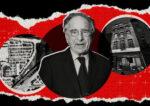Trending
Rent regulation splits Manhattan’s rental market into two separate ecosystems

Despite Manhattan’s reputation as a playground for the well-to-do, half of the borough’s rental units are under rent regulation, public housing or some other type of government program, effectively creating two different rental markets, the New York Times reported.
For example, in the East Village, only 20 to 30 market-rate units are available in the entire area in any given month, according to a real estate expert quoted by the Times.
However, if Manhattan were completely rid of rent regulations and other housing subsidies, it would become an island solely occupied by the rich and middle class, according to several housing analysts cited by the Times.
The problem is exacerbated by the fact that a majority of the people in rent-regulated Manhattan apartments make far above the poverty level, according to data from NYU’s Furman Center for Real Estate and Urban Policy, cited by the Times.
Advocates for continued rent regulation and those who oppose it agree on one thing: were such programs to be eliminated, it would be great for landlords and the middle class, but awful for people who benefit today. Those living in such apartments would have to leave, the landlords of the units would invest in upgrades and charge higher rents, and the subset of apartments that had previously been at market rate would see their rents fall – because there would suddenly be twice as many apartments on the market.
Even so, rent-regulation programs are unlikely to go away. “We can’t just say, ‘Let’s get rid of rent regulations and replace them with the optimal system,’” Vicki Been, director of NYU’s Furman Center, told the Times. [NYT] – Julie Strickland




